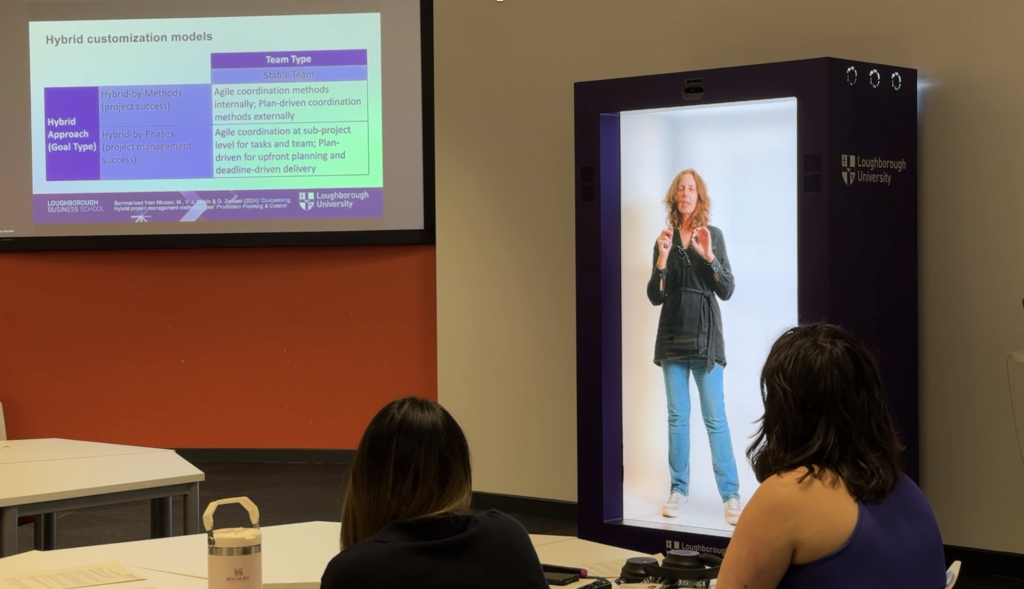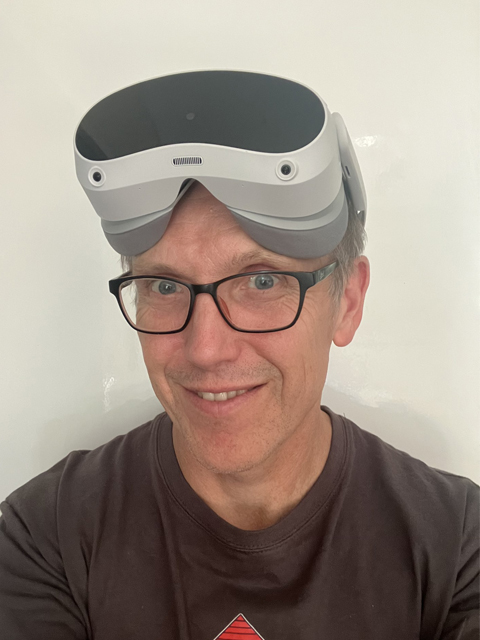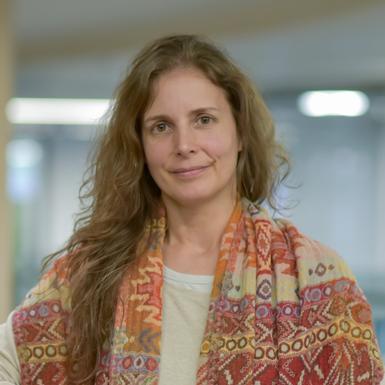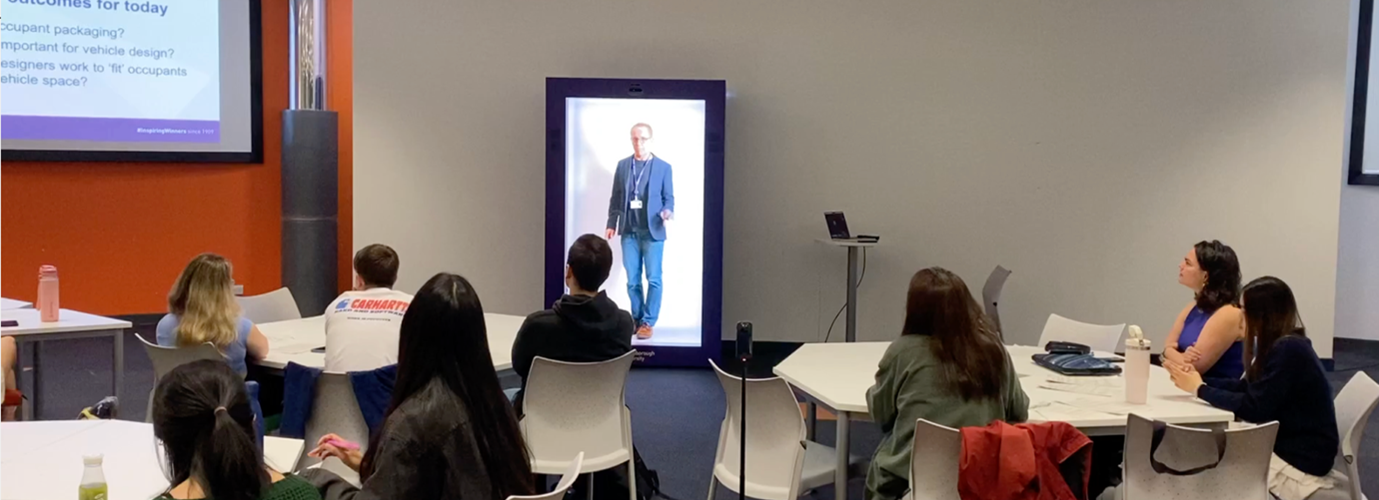by Gary Burnett & Vikki Locke, Loughborough University, UK.
Guest lectures are a valuable part of university teaching, allowing students access to expertise from across the globe. Yet, it is clearly expensive (in time, money, Co2 etc.) for a speaker to travel for such a short period of time to give a lecture. Moreover, there are well-documented problems in the use of 2D video conferencing teaching sessions, where teachers and students do not feel co-located – ultimately leading to a poor overall experience for all concerned.
At Loughborough University, we have recently conducted exploratory trials of a novel hologram-type display in the context of guest lectures – which we reported on at the June 2024 Media and Learning conference in Leuven. We invited 12 students from across the University to attend two mini-lectures on general interest topics (each approximately 15 minutes in duration) and to complete a survey, whilst also being videoed. Two speakers were on campus for this test session – but not physically in the same room as the students. Instead, they appeared as holograms within a Proto Hologram box as full-sized representations and were able to engage with slides and the students.

The primary research questions were to understand whether students: 1) believed the hologram lecturer was ‘present’ with them; 2) perceived a lecture delivered in this way to be closer to an in-person or video conferencing format; and 3) behaved in a way that was consistent with an authority figure being present.
The survey results indicated that social/co-presence was clearly high, with the students believing strongly that the hologram speaker was ‘in the room’, sentient, conscious of them and, essentially behaving as an authentic lecturer. Moreover, the student’s perceived satisfaction, engagement, and sense of learning suggested the experience was much closer to an in-person lecture than a video conferencing session. Survey and video observations indicated that the students behaved in a manner that was akin to how they would behave if the lecturer was physically present in the room – highlighting that the lecturer was able to have control over the teaching session, despite being limited to some degree in agency. Students were generally extremely positive about the experience with a hologram lecturer, noting how engagement was affected by both the novelty aspects but also the quality of the visual and audio personification of a lecturer:
“I felt very excited about it …. and I had more focus on what the speaker said!”
“Felt like they were in the room and was just like a lecture”
“The speaker looks more active in hologram than in video speech….”

Nevertheless, they also reported some specific disadvantages in this context, such as potential distraction and the lack of interactivity possible. Interestingly, some students noted how they found it slightly intimidating that the hologram lecturer appeared to be looking at them throughout the lecture (a direct consequence of the ‘Mona Lisa’ effect with camera-based technology).
“…it felt there could be a barrier between lecturer and the students since I could feel my mind wondering at some points”
“…the lecturer seemed very focused on me which was quite weird…”
At the end of the lectures, we included a ‘surprise’ multi-choice test to investigate whether students had indeed been paying attention to the content provided and not been excessively distracted by the novel technology. Five questions were given each with 4 possible options. The mean score was 73% (range 58-92%) suggesting that students did indeed appear to have some immediate learning from the two mini-lectures.
From the perspective of the two lecturers, it was also useful to capture what they thought about the teaching experience. In this respect, both speakers noted how limitations in the visual/audio technology available at their end meant they didn’t really feel present with the students themselves. In addition, they felt constrained in their ability to freely move around space and/or engage naturally with their slides and students. Interestingly, there was a degree of empowerment though afforded by the lecturer being able to ‘bring in’ content/props not visible to the students to increase their anticipation/ engagement within a teaching session.
We are planning to conduct larger-scale studies using the hologram technology in the coming months, with actual guest lectures embedded into curricula. Moreover, we wish to explore the use of this technology for supporting more innovative forms of teaching activity, such as use of pre-recorded scenarios, as well as engagement with AI avatars (e.g. for reflective conversations with historical figures). Importantly, we also believe it is critical for students to have direct access to this technology so they can generate their own content to showcase themselves and their digital creations – providing unique opportunities to enhance personal digital literacy skills, of upmost significance for their future careers.
Authors

Gary Burnett, Professor of Digital Creativity, School of Design and Creative Arts, Loughborough University, UK

Vikki Locke, Professor of Teaching Practice, Loughborough Business School, Loughborough University, UK














